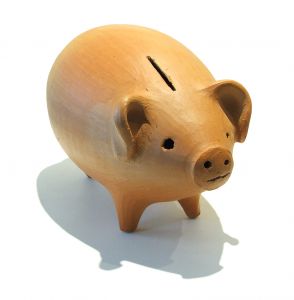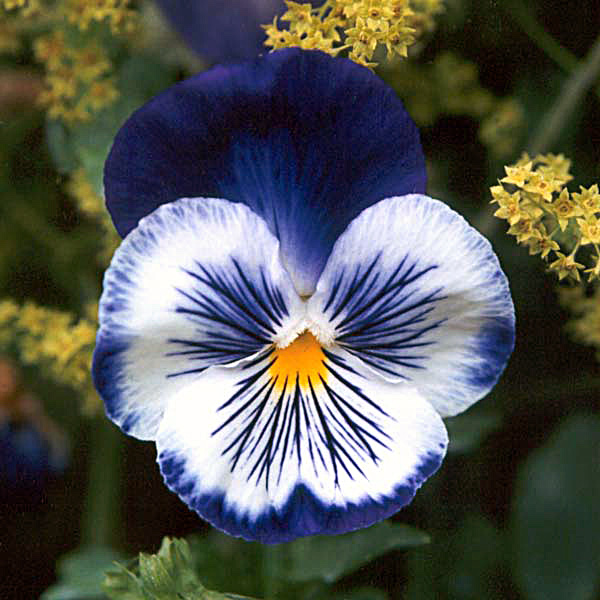That lasted only a couple of hours. But I'm a bit proud of this, I have to say. That's the first time I ever lost my voice because I was so into a concert, I was singing and yelling and whooping like mad.
Dave swears a lot in this. That's the way he is.
But of course I had to know more about losing your voice.
- The medical term for losing your voice is laryngitis.
- I had always thought of laryngitis as something official and medically serious that happened in connection with some sort of illness. Duh me. It's far more general than that. Any time you lose your voice, regardless of the reason, it's laryngitis.
- You lose your voice because the vocal cords in your voice box, or larynx, become inflamed. The word "laryngitis" literally means "larynx, swollen."

As this diagram shows, your larynx is at the top of your trachea, or wind pipe. It's not connected up with your esophagus but sits next to it.
(Image from HowsHealth)
From the top down, the larynx looks rather like a vagina. So you may be rather startled by these images, but relax. It's just the larynx.

This is the best image I found of what laryngitis looks like compared to vocal cords that are healthy. The vocal cords turn red and swell up.
(Diagram from emedicinehealth)
Here's a video that shows how the larynx and vocal cords works, and what happens to them when you get laryngitis. (I'd embed it here but that's not allowed.)
Of course after I looked at pictures of laryngitis and watched that video, I wanted to know more about how the larynx / vocal cords work in general. So I've got a couple visuals for you as part of that detour.

This seems counter-intuitive to me, but when the vocal cords are open, that means you're breathing and not making any sound through your trachea. When they're closed, that means you're talking or singing.
(Diagram from vocal clinic)
Finally, because I'm fascinated by the whole vocal cord (or vocal fold) thing in general, here's a video of a woman's larynx in action as she breathes and then sings. There's a spot in the middle where all the action stops, but after that, you can see what her vocal folds like like as she sings the National Anthem. It's pretty amazing that such sound comes out from such a little thing.
- Okay. Now back to the more specific topic of laryngitis.
- By the way, you don't have to lose your voice entirely to have laryngitis. Hoarseness alone can be an indicator of laryngitis.
- All kinds of things can cause you to lose your voice:
- Overusing your voice, like I did
- Cold or flu (this is the most common cause)
- Acid reflux
- Irritation from smoke or other harsh fumes, or due to allergies
- By the way, I think someone ought to study Dave Grohl's larynx. He screams like a madman for hours, night after night, and he seems to be completely unaffected.
- For most people in most situations, the swelling in the larynx subsides after a few days.
- If the laryngitis lasts longer than two weeks, then it's time to go see the doctor. You may have a viral or a bacterial infection, or some other situation going on that requires further treatment.
- But if you've lost your voice for relatively minor reasons and you're about as irritated by it as the vocal cords are themselves, here are some tips.
What Not to Do
- Losing your voice is common enough that a there a lot of suggestions out there for home remedies. Many of them don't do anything or they may even make the situation worse.
- Lemon -- People often recommend drinking hot tea with lemon, or warm water with lemon, or sucking on lemon lozenges. Lemon is an acid. Acids irritate things, including vocal cords. Acids also contribute to acid reflux, which is the most common cause of chronic laryngitis. If you've lost your voice, avoid lemons and lemon juice.
- Hot tea -- This is another acid. Even the much-lauded green tea. Not a good idea for an inflamed larynx.
- Acids in general -- Lots of foods out there are acidic, and it's a good idea to avoid these if you've lost your voice. Some other acids to avoid are any citrus fruits, tomatoes, and -- sob -- chocolate.
- Hot toddies -- for those of you younger than 109, a toddy is a warm alcoholic beverage. Some people recommend warm whiskey with lemon (as to the lemon, see above), or warm brandy or rum for laryngitis. Alcohol is a desiccant. That means it will dehydrate you. Anything inflamed will get worse if you take the moisture away. So alcohol is the opposite of what your inflamed larynx wants.
- Whispering -- Since you can't speak in your normal way, you may be tempted to whisper. But whispering actually puts extra stress on the vocal cords. You're effectively constricting the vocal folds, holding them back out of the way while allowing sound to pass through them. This keeps them from rubbing together, and it dries them out. As we know, dry vocal folds are unhappy vocal folds. So whispering may actually make your vocal cords take longer to heal.
- Clearing your throat -- Like whispering, clearing your throat puts added stress and vibration on your already inflamed, sore vocal cords. You may be tempted to do it as a way to make the hoarseness go away. But it will only hurt, not help.
What Makes No Difference
- Slippery elm -- this is one of those botanicals that people have recommended for years to treat sore throats or laryngitis. It's essentially gooey, and people think the gooiness helps coat and soothe the throat. But there is so far no scientific evidence that shows this helps at all. There's no evidence that shows it hurts, either. So it's a placebo.
What Does Help
- Drink lots of water -- yes, I know, you hear this so often it's boring. But it's true. Good old water is plain good for you. Inflammation is often caused by or characterized by not enough moisture. So an inflamed larynx will be helped and soothed the most by giving it all the nice, soothing, life-giving moisture you can: water. As an added bonus, if there's anything floating around in there like smoke or bacteria or some other irritant, the water will help flush that out.
- Use a humidifier -- a humidifier or a vaporizer are other good ways of getting more of that soothing, life-restoring moisture to the larynx. If your laryngitis is due to a cold, the extra humidity will help break up the stuffiness in your sinuses.
- Stop smoking -- you need to do this anyway for all sorts of reasons. You'll also want to avoid second-hand smoke too.
- Don't speak -- your vocal cords are tired. They've been overstrained, or overloaded by some external badness like a cold or an allergen or smoke. They need to rest. Don't speak. Let them sleep.
Take Helen's advice.
Sources
WebMD, Laryngitis
Mayo Clinic, Laryngitis
ABC News Cold and Flu Coverage, Losing Your Voice: 5 Myths for Remedies
Vox Daily, Vox Health: The Dangers of Whispering for Your Voice
Anahad O'Connor, The Claim: Whispering Can Be Hazardous to Your Voice, The New York Times, February 7, 2011





























